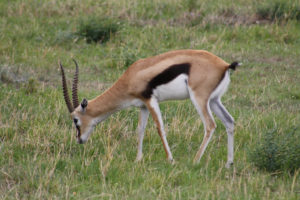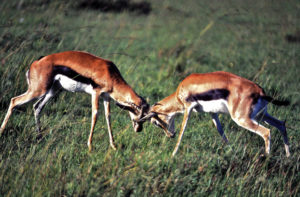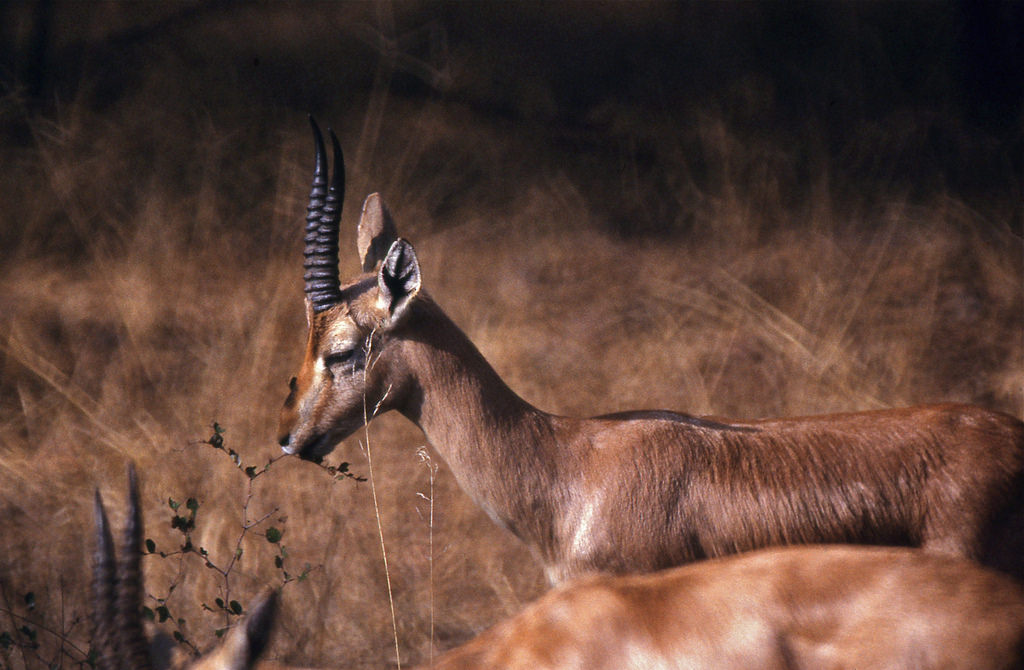Gazelles are any of the antelope species that are part of the Gazella genus. They’re known as fast and agile animals. Some species are able to run at bursts as high as 100 kilometers per hour, or 60 miles per hour. Gazelles are able to run at a sustained speed of 50 kilometers per hour, or 30 miles per hour. Take a look below for 26 more fun and interesting facts about gazelles.
1. Gazelles are mostly found in deserts, grasslands, and the savannas of Africa. Some species are also found in the southwest and central Asia, and the Indian subcontinent.
2. They’re rather small antelopes as most reach between 60 and 110 centimeters, or 2 to 3.5 feet, in height when measured at the shoulder.
3. The Thomson’s gazelle, Eudorcas thomsoni, is the most familiar African species of gazelle. They’re around 60 to 80 centimeters, or 24 to 31 inches, in height when measured at the shoulder.
4. Thomson’s gazelles can reach between 35 to 55 pounds of weight. The male gazelles are larger than the female gazelles.
5. They back side of the Thomson’s gazelle is covered with a tan or cinnamon colored fur. Their belly is white with black stripes running along the lateral side of their body.
6. Male gazelles have longer horns than female gazelles. The male gazelle has horns that are ridged, positioned parallel and curved backward. The female gazelle has short and smooth horns.

7. Males use their horns during territorial fights. The winner of the fight takes over the territory.
8. They’re known for living in herds. Larger herds are made up mostly of female gazelle and their offspring. Males live in separate herds as they’re very territorial.
9. Their territory is marked with urine, feces and scent that’s produced with a special gland.
10. Secretion from the scent gland is left every day at a distance of 20 feet, to mark the boundaries of territory.
11. Gazelles migrate toward better sources of food and water during the dry season. During migration, they will often mix with other animals and species, such as wildebeests and zebras.
12. They’re herbivores, which means that they primarily eat plants. The majority of their diet consists of grass, but they sometimes eat seeds and shrubs.
13. They drink very small amounts of water because they’re able to extract moisture from the food that they eat.
14. Gazelles have many predators. The ones that prey on younger gazelles are servals, jackals, pythons, baboons and eagles. The ones that prey on adult gazelles are lions, cheetahs, hunting dogs, leopards and hyenas.
15. They have an amazing sense of smell, hearing and eyesight. They use all of these senses to try and detect predators and escape danger in time.
16. When they’re faced with danger, they begin running. While running, they will occasionally jump in the air with all four feet above the ground. This is known as “pronking” or “stotting.”

17. They mate twice a year, with offspring being born at the beginning of the rainy season.
18. Female gazelle give birth to a single offspring, with twins being very rare. The offspring will spend the first couple of days or weeks hidden in the grass. After that, the female gazelle and its offspring will rejoin the herd.
19. They live between 10 and 13 years in the wild, and up to 15 years in captivity due to better living conditions.
20. When gazelles sense the presence of another animal, they will flick their tail or stomp their feet. This is a warning sign to other members of the herd.
21. As soon as young gazelles become of age, the males will join a group called a bachelor’s herd, while the females will join the larger herd.
22. Due to such a high number of gazelles being killed by predators, giving birth twice per year is essential for their survival. This also brings balance to the ecosystem because a higher number of herbivores compared to carnivores is needed.

23. The word “gazelle” is derived from the Arabic name “gazal.”
24. The first Romance language to adopt the word was Middle French, after which the word entered the English language in the 1600s.
25. Appreciated for its grace, it’s a symbol closely associated in Arabic literature with female beauty.
26. One of the traditional themes of Persian love poetry involves comparing the gazelle with the beloved, and linguists even theorize that “ghazal,” the world for love poetry in Persian, is directly related to the word “gazelle.”





3 Comments
joyce
May 10, 2018 at 5:20 pmi love gazelles!!!
Kristen
July 5, 2018 at 5:04 amI love Song Of Solomon! “Come away, my love! Be like a,gazelle or a young stag on the mountains of spices” (Song of Songs 8:14)
bella
October 10, 2019 at 11:03 pmI am doing a project on this animal